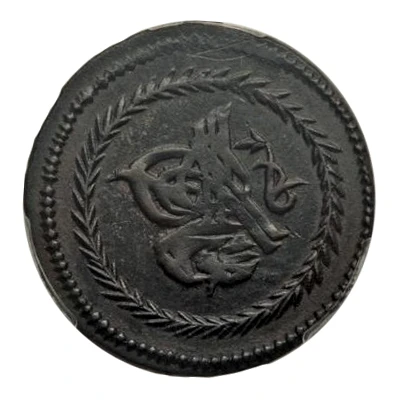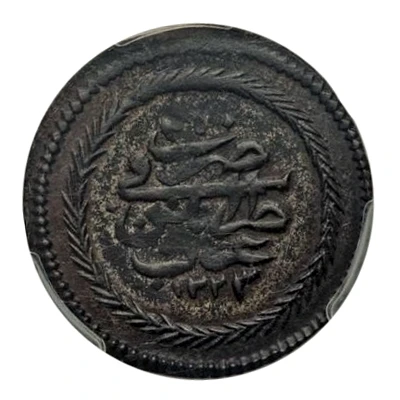


© Heritage Auctions
20 Para - Mahmud II type A
1223 (1808) year| Billon | 5.59 g | 31 mm |
| Issuer | Regency of Tripoli (Libya) |
|---|---|
| Sultan | Mahmud II (1808-1839) |
| Type | Standard circulation coin |
| Year | 1223 (1808) |
| Calendar | Islamic (Hijri) |
| Value | 20 Para (0.5) |
| Currency | Kuruş (1688-1844) |
| Composition | Billon |
| Weight | 5.59 g |
| Diameter | 31 mm |
| Shape | Round |
| Demonetized | Yes |
| Updated | 2024-10-06 |
| Numista | N#115768 |
|---|---|
| Rarity index | 93% |
Reverse
Mint and date within beaded circle
Script: Arabic
Lettering:
٢٠
ضرب
في
طرابلس
غرب
١٢٢٣
Translation:
20
Struck in Tripoli West
1223
Comment
Note by Heritage Auctions about the pictured coin:"Ottoman Empire. Mahmud II 20 Para? AH 1223 Year 21 (1827/8) AU50 PCGS, Tarabalus Gharb mint (in Libya), 6.79gm, 28mm, KM-Unl., Pere-Unl., ICV-Unl. Apparently unpublished, and demonstrative of a style and quality that seems at once foreign to the recorded issues of this prime Libyan mint. The roundness and execution of the flan, with a finely detailed wreath providing an inner border, is visually incredible, and may perhaps indicate some sort of trial issue. Die polish lines are additionally visible, with weakness in the centers more in line with the style of Libyan coinage, some traces of silvering also detectable on the reverse. Mislabeled on the holder as KM166. Ex. Dr. Hans Wilski CollectionHID05401242017"
Interesting fact
One interesting fact about this coin is that it was issued during the reign of Mahmud II, who was the Sultan of the Ottoman Empire from 1808 to 1839. This coin was minted in the Regency of Tripoli, which was a province of the Ottoman Empire located in present-day Libya. The use of Billon, a copper and silver alloy, was a common practice in the Ottoman Empire during this time period.